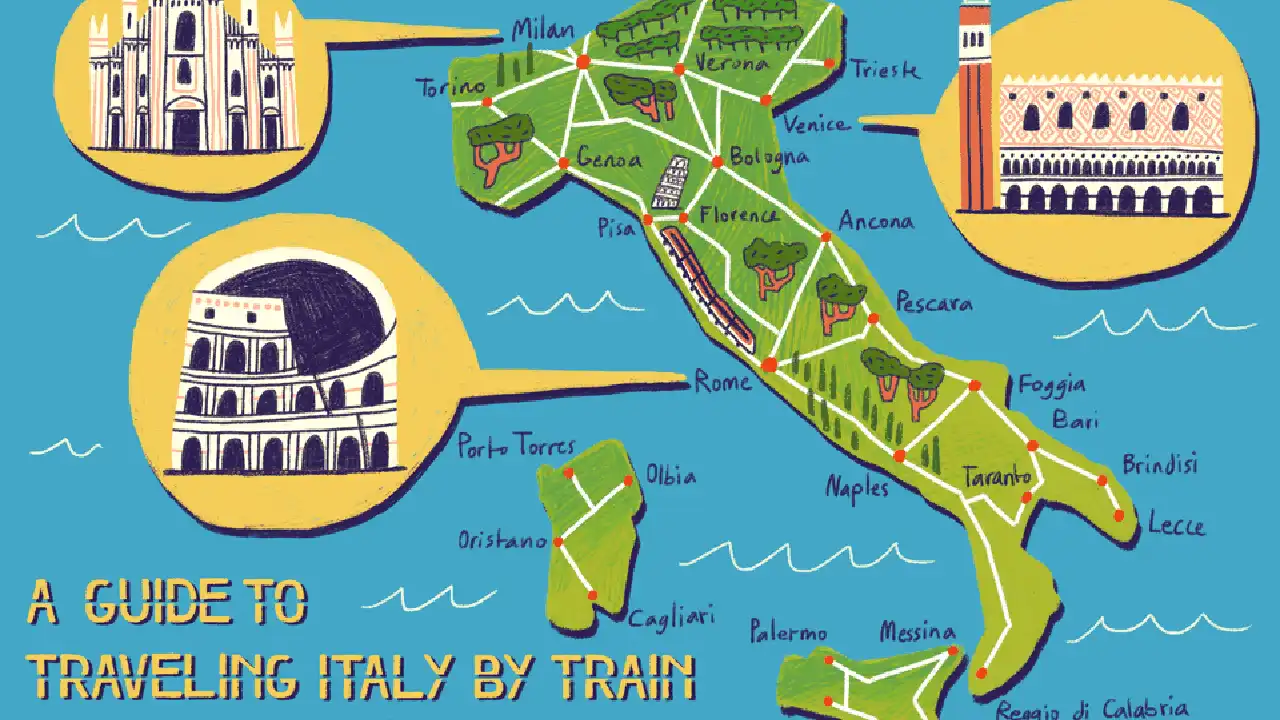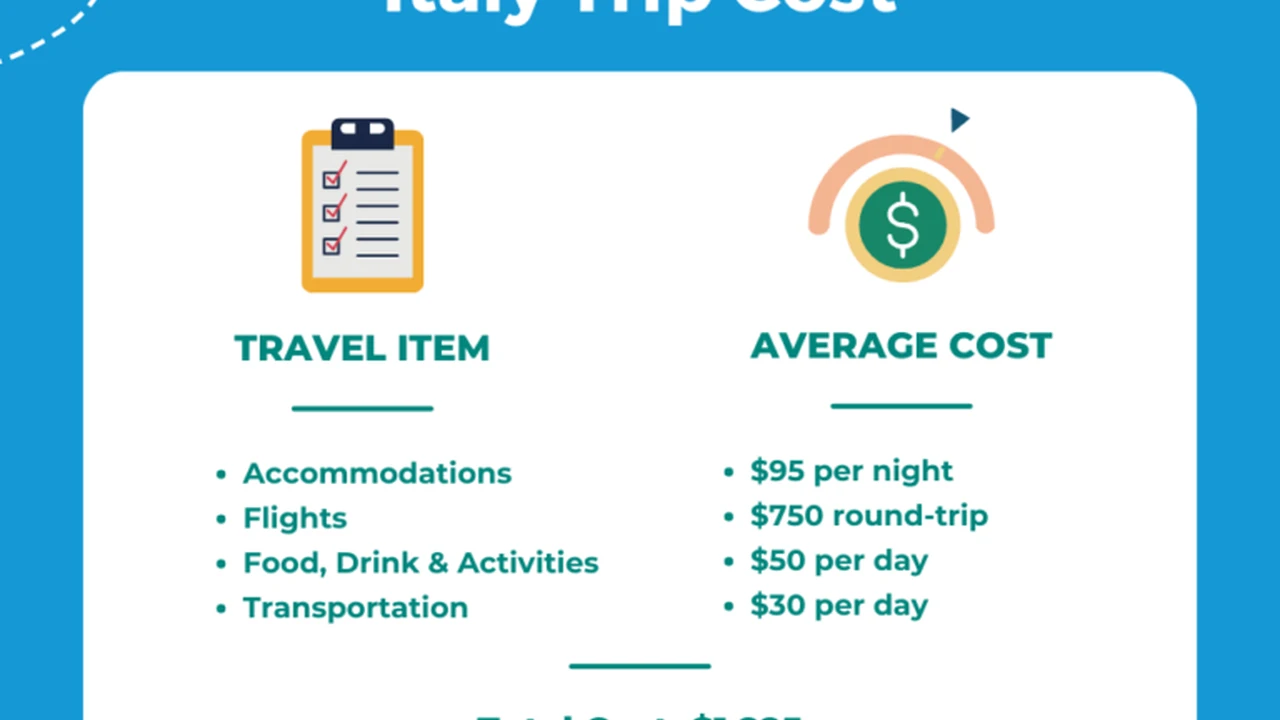Italy Train Travel: A Comprehensive Guide
Planning your first trip to Italy? Avoid common mistakes with these 10 essential tips. Learn about transportation, accommodation, and local customs. Make your Italian adventure unforgettable and stress-free.

Why Choose Train Travel in Italy Italian Train Routes and Benefits
Okay, so you're thinking about hitting Italy? Awesome choice! But instead of dealing with crazy traffic or pricey flights between cities, let's talk about trains. Seriously, train travel in Italy is a game-changer. It’s efficient, often faster than driving (especially in cities), and a fantastic way to soak up the stunning scenery. You'll be zipping past vineyards, rolling hills, and charming little towns – stuff you totally miss when you're stuck on the autostrada or crammed into an airplane.
Plus, Italian train stations are usually right in the heart of the city, which means you can hop off and start exploring almost immediately. No need to mess with airport transfers or long taxi rides. Think about it: Rome Termini drops you right in the city center, Florence's Santa Maria Novella is steps away from the Duomo, and Milan Centrale is an architectural marvel in itself. Convenience? Check! Scenic views? Double-check! Less stress? Absolutely!
Understanding Italian Train Types Trenitalia and Italo Comparison
Now, let's get down to the nitty-gritty. Italy's main train operators are Trenitalia and Italo. Trenitalia is the big daddy, the national rail operator, and they run a huge range of trains, from super-fast high-speed services to slower regional trains that stop at every little village. Italo, on the other hand, is a private company that focuses on high-speed routes between major cities.
So, which one should you choose? Well, it depends on where you're going and how fast you want to get there. For long distances between big cities like Rome, Florence, Milan, and Venice, Italo and Trenitalia's Frecciarossa (Red Arrow) trains are your best bet. These bad boys can hit speeds of up to 300 km/h (186 mph), which means you can travel from Rome to Milan in just about 3 hours. The seats are comfy, there's usually Wi-Fi, and you can even grab a snack or a drink on board.
If you're planning on exploring smaller towns or rural areas, Trenitalia's regional trains are the way to go. These trains are slower and make more stops, but they're also cheaper and offer a more authentic travel experience. Just be prepared for a potentially longer journey and maybe a few more locals crammed into the carriage with you.
Here’s a quick comparison table:
| Feature | Trenitalia | Italo |
|---|---|---|
| Coverage | National, including regional lines | High-speed routes between major cities |
| Speed | Varied, from high-speed to regional | High-speed only |
| Price | Generally cheaper, especially for regional trains | Can be more expensive, especially without advance booking |
| Comfort | Varies depending on the train type | Generally high comfort levels |
| Booking | Online, at stations, and through travel agencies | Online and at stations |
Purchasing Italian Train Tickets Online Booking and Station Options
Alright, time to talk tickets. The easiest way to book your train tickets in Italy is online, either through the Trenitalia or Italo websites. Both sites are pretty user-friendly, and you can usually find some good deals if you book in advance. Plus, you can avoid the lines at the station – always a bonus!
When you're booking online, make sure you double-check the date, time, and destination before you hit that "purchase" button. And pay attention to the different fare options. Both Trenitalia and Italo offer a range of fares, from super-saver discounts to flexible tickets that you can change or cancel without penalty. If you're not sure about your travel plans, it might be worth paying a little extra for a flexible ticket.
If you prefer to buy your tickets at the station, you can do that too. Most major train stations have ticket windows and self-service kiosks where you can purchase tickets using cash or credit card. Just be aware that the lines can be long, especially during peak season. And if you're buying a regional train ticket at the station, you'll need to validate it before you board the train. There are usually validation machines near the platforms – just stick your ticket in and it will stamp the date and time on it. Don't forget to do this, or you could get fined!
Navigating Italian Train Stations Platform Information and Luggage Handling
Okay, you've got your ticket, you're at the station – now what? Italian train stations can be a bit chaotic, especially during rush hour. So, it's a good idea to arrive a little early so you have time to find your platform and get settled in.
The platform number is usually displayed on large electronic boards throughout the station. Look for your train number and destination, and then head to the corresponding platform. Once you're on the platform, keep an eye out for the train number displayed on the side of the train. It's also a good idea to ask a station employee or a fellow traveler if you're not sure you're in the right place.
As for luggage, most Italian trains have overhead racks and luggage compartments where you can store your bags. On high-speed trains, there's usually plenty of space. But on regional trains, it can get a bit crowded, especially during peak season. So, try to pack light if you can. And keep an eye on your belongings, especially in crowded stations and on busy trains.
Tips for a Smooth Italian Train Journey Seat Reservations and Avoiding Delays
Want to make your Italian train journey even smoother? Here are a few tips:
* **Book in advance:** Especially during peak season, it's a good idea to book your train tickets in advance to secure your seat and get the best prices. * **Consider seat reservations:** On high-speed trains, seat reservations are usually included in the ticket price. But on regional trains, you may need to pay extra for a reserved seat. If you're traveling during a busy time, it might be worth it to avoid standing for the entire journey. * **Check for delays:** Italian trains are generally pretty reliable, but delays do happen. Check the Trenitalia or Italo websites or apps for real-time information on train schedules and delays. * **Pack snacks and drinks:** While some trains have onboard cafes or vending machines, it's always a good idea to bring your own snacks and drinks, especially if you're traveling on a long journey. * **Learn some basic Italian phrases:** While many Italians speak English, it's always appreciated if you can speak a few basic Italian phrases. "Buongiorno," "grazie," and "per favore" will go a long way.Product Recommendations for Comfortable Train Travel in Italy
To make your Italian train adventure even more enjoyable, here are a few product recommendations:
* **Bose QuietComfort 45 Headphones:** These noise-canceling headphones are a lifesaver on noisy trains. Block out the chatter and enjoy your music or a good book. Price: Around $329. * **Anker PowerCore 10000 Portable Charger:** Keep your phone and other devices charged on long journeys. This compact power bank provides multiple charges. Price: Around $25. * **Cabeau Evolution S3 Travel Pillow:** Get comfortable and catch some Z's with this supportive travel pillow. It attaches to your seat to prevent your head from falling forward. Price: Around $40. * **Travelon Anti-Theft Classic Messenger Bag:** Keep your belongings safe and secure with this anti-theft bag. It features slash-resistant straps and locking compartments. Price: Around $70. * **Rick Steves Italy Guidebook:** A comprehensive guidebook with maps, itineraries, and insider tips. A must-have for planning your Italy trip. Price: Around $25.Let's dive into a bit more detail on why these products are great and how they compare:
Bose QuietComfort 45 vs Sony WH-1000XM5 Noise Cancelling Headphones
Both are top-tier noise-cancelling headphones, perfect for drowning out train noise. The Bose QC45 are known for their exceptional comfort and balanced sound. The Sony WH-1000XM5 offers slightly better noise cancellation and customizable sound profiles through its app. The Sony headphones are generally priced around $399, making the Bose a slightly more budget-friendly option if comfort is your priority.
Anker PowerCore 10000 vs Mophie Powerstation PD Portable Chargers
Both provide reliable portable charging. The Anker PowerCore 10000 is compact and affordable, ideal for basic charging needs. The Mophie Powerstation PD offers faster charging with USB-C Power Delivery, beneficial for newer devices. It also has a higher capacity, meaning more charges. Expect to pay around $40-$50 for the Mophie.
Cabeau Evolution S3 vs Trtl Pillow Travel Pillows
The Cabeau Evolution S3 is a memory foam pillow with a strap that attaches to the seat, preventing head droop. The Trtl Pillow is a scarf-like support system that’s more compact. The Cabeau offers better overall support but is bulkier. The Trtl is more portable but less supportive for some. The Trtl is often priced around $30, making it a cheaper, more compact alternative.
Enjoying the Italian Train Experience Scenic Routes and Cultural Immersion
Okay, you're all set for your Italian train adventure. Now it’s time to relax and enjoy the ride. One of the best things about train travel in Italy is the scenery. Whether you're zipping through the Tuscan countryside or hugging the Ligurian coastline, you're in for some seriously stunning views. So, grab a window seat, sit back, and soak it all in.
And don't be afraid to strike up a conversation with your fellow travelers. Italians are generally friendly and welcoming, and you might just make some new friends or get some insider tips on the best places to visit. Plus, train travel is a great way to experience the local culture. You'll see how Italians travel, what they eat, and how they interact with each other. It's a much more authentic experience than flying or driving.
So, there you have it – a comprehensive guide to train travel in Italy. With a little planning and preparation, you can have a smooth, enjoyable, and unforgettable journey. Buon viaggio!
:max_bytes(150000):strip_icc()/277019-baked-pork-chops-with-cream-of-mushroom-soup-DDMFS-beauty-4x3-BG-7505-5762b731cf30447d9cbbbbbf387beafa.jpg)






